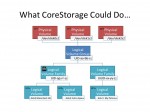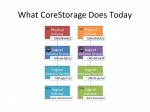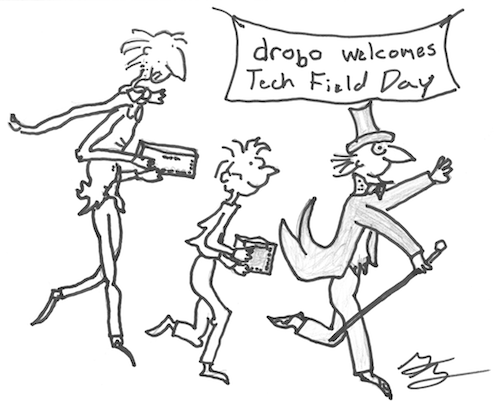I am pleased to note that CoreStorage, the volume manager in Mac OS X Lion, is much more functional than I had guessed, including a number of undocumented but seemingly functional commands for on-the-fly resizing of logical volumes as well as manipulation of physical volumes.
Apple
Mac OS X Lion Adds CoreStorage, a Volume Manager (Finally!)
Mac OS X was majorly deficient in that it lacked a volume manager. This wouldn’t seem like a big deal to the average user, but held back the operating system in so many ways. A volume manager brings storage virtualization to an operating system, allowing storage capacity efficiently to be managed and manipulated. But all this has changed in Mac OS X 10.7 “Lion†with CoreStorage.
The Transformation from Data Robotics to Drobo
Data Robotics spent the last year transforming itself from a maker of expensive consumer storage devices to a player in the nascent small enterprise storage array market. That process took another step this week, as Data Robotics officially renamed itself Drobo. It is ironic that the company would shed a longer, corporate sounding name for the familiar consumer product designation, but there is no denying the power of the Drobo brand.
When Does XL No Longer Mean “Extra Large”? HP’s Printer Inks, Of Course!
Although HP reduced the size of their “XL” ink cartridge without telling anyone, it really is a better deal for the consumer. They’re upfront about the change, too, though I wish they had used a different part number. Rather than redefining “XL”, HP should have called the new size “564L” or used some other name.
Which Apple Devices Support 802.11n Wi-Fi?
It is nice to see Apple out in front with a technology like 802.11n, considering their reluctance to support Blu-Ray and USB 3.0. Although expensive, the AirPort Extreme and 2011 MacBook Pro and iMac sport top-of-the-line specs and high performance Wi-Fi. But the lack of 5 GHz support across the board means many users will stick to the crowded 2.4 GHz spectrum, limiting performance.




